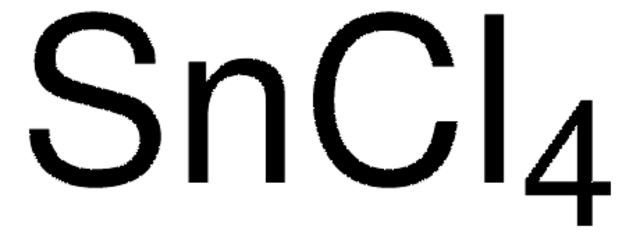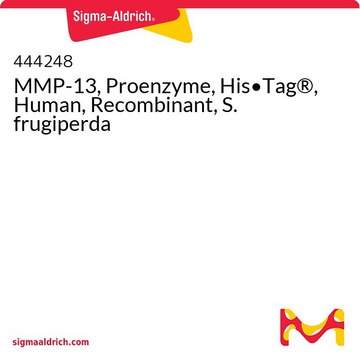408700
Poly(ethyleneimine) solution
average Mw 1800, 50 wt. % in H2O
Sinônimo(s):
Ethyleneimine polymer solution, PEI
Faça loginpara ver os preços organizacionais e de contrato
About This Item
Número CAS:
Número MDL:
Código UNSPSC:
12162002
ID de substância PubChem:
NACRES:
NA.23
Produtos recomendados
Formulário
liquid
peso molecular
average Mw 1800
concentração
50 wt. % in H2O
índice de refração
n20/D 1.453
densidade
1.08 g/mL at 25 °C
cadeia de caracteres SMILES
N1CC1.NCCN
InChI
1S/C2H8N2.C2H5N/c3-1-2-4;1-2-3-1/h1-4H2;3H,1-2H2
chave InChI
SFLOAOINZSFFAE-UHFFFAOYSA-N
Descrição geral
Poly(ethyleneimine) (PEI) is a positivelycharged polymeric amine with a linear or branched structure. It has chelating properties with a variety of metal ions. It is highlysoluble in water and behaves as an effective base in aqueous solutions. Due toits superior physicochemical properties, it is widely used in the field ofbiomedicine, water purification, bioimaging, gene delivery, and self-healingmaterials.
Aplicação
Poly(ethyleneimine) solution can be used for surface modification of cation exchange resins. The modified resins exhibited improved selectivity towards transition elements. Due to repulsion effects within the cationic layer, the selectivity for alkaline ions decreases. As a result, this resin can be applied to purify industrial waste by column sorption.
It can be used as a precursor to prepare polyelectrolyte multilayers for the promotion of cell adhesion and growth on implant surfaces.
PEI can act as a reactive template and stabilizing agent in the preparation of metal nanoparticles in aqueous media. The amino groups in the PEI can coordinate with metal ions dissolved in water and reduce their aggregation capability. This results in the formation of smaller nanoparticles.
It can be used as a precursor to prepare polyelectrolyte multilayers for the promotion of cell adhesion and growth on implant surfaces.
PEI can act as a reactive template and stabilizing agent in the preparation of metal nanoparticles in aqueous media. The amino groups in the PEI can coordinate with metal ions dissolved in water and reduce their aggregation capability. This results in the formation of smaller nanoparticles.
Características e benefícios
- It has repetitive structural units and aflexible polymer chain.
- Due to the accessibility of a huge number ofamino groups on PEI, it can be modified or functionalized for specific featuressuch as sensitivity, specificity, and biocompatibility.
- Highwater solubility.
forma física
Branched polymer
Palavra indicadora
Warning
Frases de perigo
Declarações de precaução
Classificações de perigo
Aquatic Chronic 2 - Skin Sens. 1
Código de classe de armazenamento
10 - Combustible liquids
Classe de risco de água (WGK)
WGK 2
Escolha uma das versões mais recentes:
Já possui este produto?
Encontre a documentação dos produtos que você adquiriu recentemente na biblioteca de documentos.
Os clientes também visualizaram
Laura R H Ip et al.
Oncotarget, 6(12), 10548-10562 (2015-04-15)
Treatment options for ovarian cancer patients remain limited and overall survival is less than 50% despite recent clinical advances. The lipid phosphatase inositol polyphosphate 4-phosphatase type II (INPP4B) has been described as a tumor suppressor in the PI3K/Akt pathway with
Diana F Silva et al.
Journal of neuroinflammation, 17(1), 332-332 (2020-11-07)
After decades of research recognizing it as a complex multifactorial disorder, sporadic Alzheimer's disease (sAD) still has no known etiology. Adding to the myriad of different pathways involved, bacterial neurotoxins are assuming greater importance in the etiology and/or progression of
Artigos
We present an article that discusses two applications in particular; first, using these layers as polyelectrolyte membranes to control permeability.
Nossa equipe de cientistas tem experiência em todas as áreas de pesquisa, incluindo Life Sciences, ciência de materiais, síntese química, cromatografia, química analítica e muitas outras.
Entre em contato com a assistência técnica










